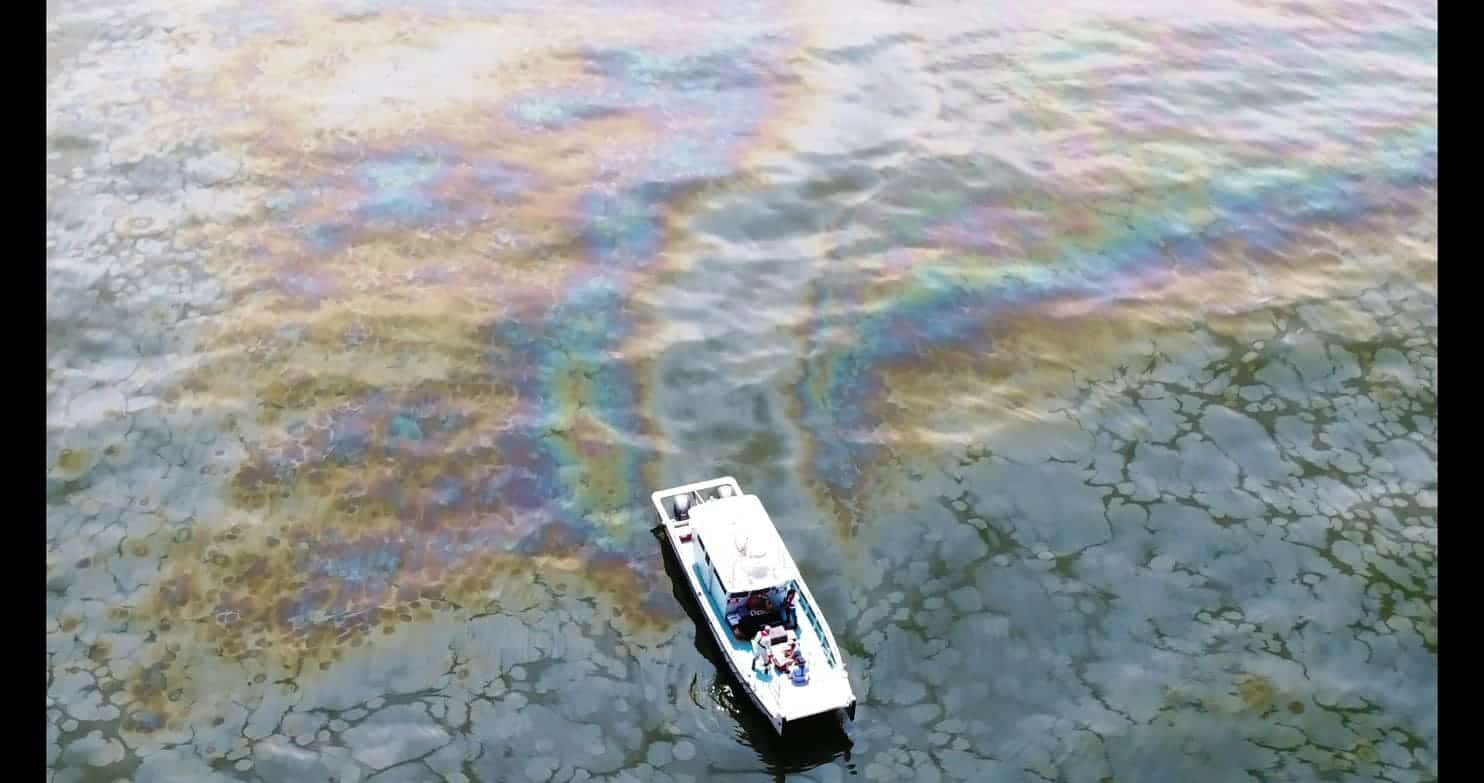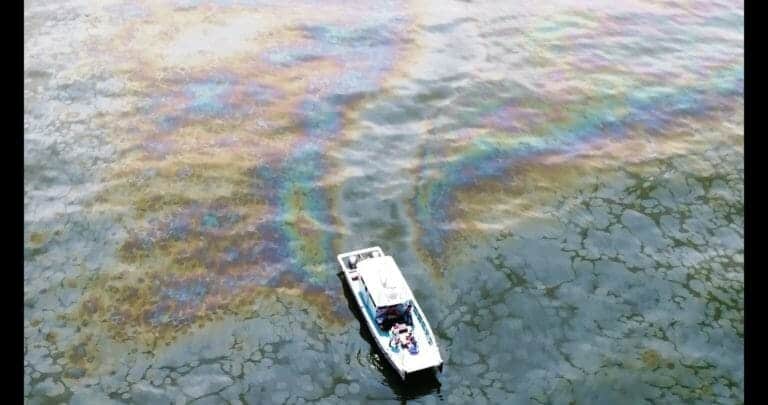Photo: An aerial image of an oil slick in the Gulf of Mexico, taken on April 28, 2018. (Oscar Garcia-Pineda)
NEW ORLEANS — An oil spill that has been quietly leaking millions of barrels into the Gulf of Mexico has gone unplugged for so long that it now verges on becoming one of the worst offshore disasters in U.S. history.
Between 300 and 700 barrels of oil per day have been spewing from a site 12 miles off the Louisiana coast since 2004, when an oil-production platform owned by Taylor Energy sank in a mudslide triggered by Hurricane Ivan. Many of the wells have not been capped, and federal officials estimate that the spill could continue through this century. With no fix in sight, the Taylor offshore spill is threatening to overtake BP’s Deepwater Horizon disaster as the largest ever.
As oil continues to spoil the Gulf, the Trump administration is proposing the largest expansion of leases for the oil and gas industry, with the potential to open nearly the entire outer continental shelf to offshore drilling. That includes the Atlantic coast, where drilling hasn’t happened in more than a half century and where hurricanes hit with double the regularity of the Gulf.
Expansion plans come despite fears that the offshore oil industry is poorly regulated and that the planet needs to decrease fossil fuels to combat climate change, as well as the knowledge that 14 years after Ivan took down Taylor’s platform, the broken wells are releasing so much oil that researchers needed respirators to study the damage.
“I don’t think people know that we have this ocean in the United States that’s filled with industry,” said Scott Eustis, an ecologist for the Gulf Restoration Network, as a six-seat plane circled the spill site on a flyover last summer. On the horizon, a forest of oil platforms rose up from the Gulf’s waters, and all that is left of the doomed Taylor platform are rainbow-colored oil slicks that are often visible for miles. He cannot imagine similar development in the Atlantic, where the majority of coastal state governors, lawmakers, attorneys general and residents have aligned against the administration’s proposal.
The Taylor Energy spill is largely unknown outside Louisiana because of the company’s effort to keep it secret in the hopes of protecting its reputation and proprietary information about its operations, according to a lawsuit that eventually forced the company to reveal its cleanup plan. The spill was hidden for six years before environmental watchdog groups stumbled on oil slicks while monitoring the BP Deepwater Horizon disaster a few miles north of the Taylor site in 2010.
The Interior Department is fighting an effort by Taylor Energy to walk away from the disaster. The company sued Interior in federal court, seeking the return of about $450 million left in a trust it established with the government to fund its work to recover part of the wreckage and locate wells buried under 100 feet of muck.
Taylor Energy declined to comment. The company has argued that there’s no evidence to prove any of the wells are leaking. Last month, the Justice Department submitted an independent analysis showing that the spill was much larger than the one-to-55 barrels per day that the U.S. Coast Guard National Response Center (NRC) claimed, using data supplied by the oil company.
The author of the analysis, Oscar Garcia-Pineda, a geoscience consultant who specializes in remote sensing of oil spills, said there were several instances when the NRC reported low estimates on the same days he was finding heavy layers of oil in the field.
“There is abundant evidence that supports the fact that these reports from NRC are incorrect,” Garcia-Pineda wrote. Later he said: “My conclusion is that NRC reports are not reliable.”
In an era of climate change and warmer open waters, the storms are becoming more frequent and violent. Starting with Ivan in 2004, several hurricanes battered or destroyed more than 150 platforms in just four years.
On average, 330,000 gallons of crude are spilled each year in Louisiana from offshore platforms and onshore oil tanks, according to a state agency that monitors them.
The Gulf is one of the richest and most productive […]
Full article: 14-year-long oil spill in the Gulf of Mexico verges on becoming one of the worst in U.S. history
More abut the Gulf of Mexico:
Lawsuit Launched Against Trump EPA for Approving Fracking Waste Dumping Into Gulf of Mexico
Meat industry blamed for largest-ever ‘dead zone’ in Gulf of Mexico
BOEM Northern Gulf of Mexico Deepwater Bathymetry Grid from 3D Seismic
2017 Summer Gulf ‘Dead Zone’ Could Be Bigger Than Connecticut



